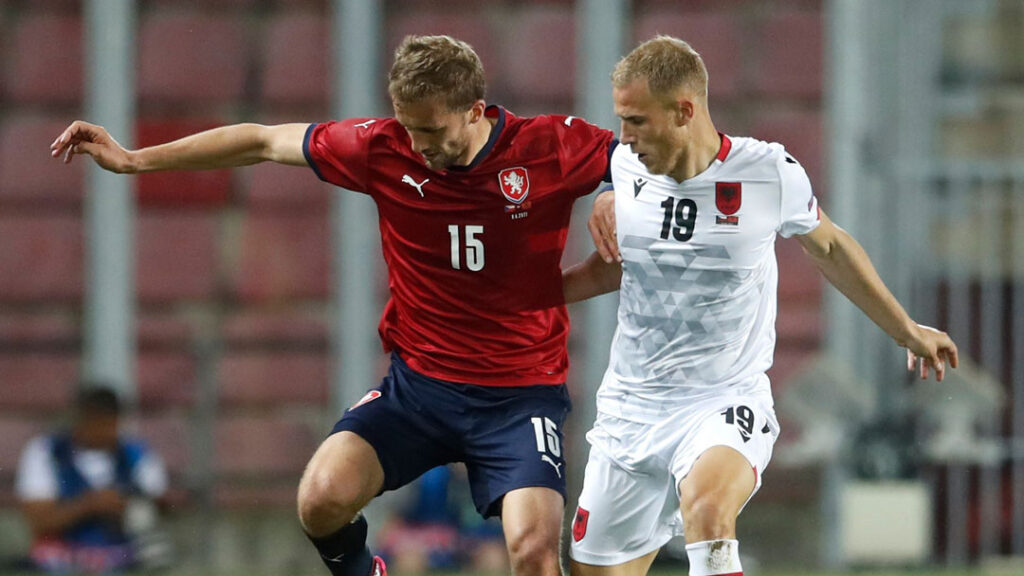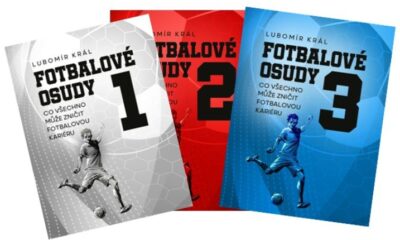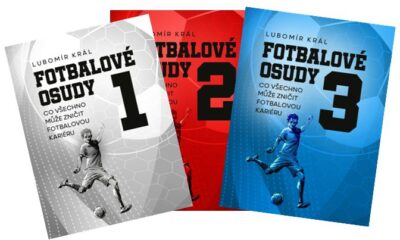Football
A window to the past: the new emblem highlights the power of the Czech lion
The Czech national team took part in the qualifying matches for the 2022 World Cup in Qatar against Belarus and Belgium with the new emblem of the Football Association on their chests. Both the fans and the players welcome the new look.

The Czech national team took part in the qualifying matches for the 2022 World Cup in Qatar against Belarus and Belgium with the new emblem of the Football Association on their chests. The new look is welcomed by fans and fans alike, who consider it dynamic and modern, yet it builds on the previous symbols in a non-violent way. A very colourful and graphically successful past. Czech football celebrates its 120th anniversary this year. As well as its emblem.
A society without symbols is nothing, the founders of the Czech Football Association realised when in 1901, still within the Austro-Hungarian Empire, they gave the strongly developing game an organisational structure. The adopted emblem was dominated by the famous two-tailed lion of Brunswick, which inherently belongs to the Czech nation.
“It was a very successful emblem that cleverly built on the national one,” says Lubomír Král, an experienced football historian and expert in phallic art, describing the graphic representation. “Moreover, the placement in a square was very practical,” he adds.
The line set was responsibly continued in the modifications in the following years, from the establishment of the independent Czechoslovak state in 1918 to the Protectorate of Bohemia and Moravia in 1939.
It was not until the socialist establishment, when Czechoslovak football did not even have a sovereign body, that significant change occurred, with the sport falling under the Czechoslovak Union of Physical Education. However, everyday activities brought the need to express the relationship to football, so the ball was used, embedded in the flag.
Like other achievements of the socialist establishment, it did not arouse general enthusiasm. “It was dull, uninteresting, boring,” points out King. ” The ball is everywhere, on every football logo. Belonging to the Czech symbol, the lion, has completely disappeared,” he continues.
The social changes in 1989 removed the socialist remnants, but more emphasis was placed on the question of nationalities. The emblem of the Czech-Moravian Football Association after the collapse of the federation was therefore adorned, in accordance with tradition, not only with the Czech lion but also with two eagles – Moravian and Silesian. “The times have borne this out,” King can understand the evolution of opinions and attitudes.
“What was worse, however, was that the state emblem was covered with a ball, which brought opposition from the state authorities, the case was even dealt with by the heraldry commission of the Chamber of Deputies,” Král recalls. In the end, the solution was simple – the ball was moved down.
Král welcomes the new look. “The lion has been spread out with the increased space, it is more leaping than before when it was walking,” says King.
The new emblem is successful, but it did not help the national team to the coveted spoils of points caught on the field of the favoured Belgium. They have to be won on the field.
Source

-
Motorsport5 days ago
Jorge Martín is rewriting history! the 26-year-old Spaniard became the new MotoGP World Champion, Bagnaia succumbed despite his best efforts
-
Motorsport6 days ago
Bagnaia keeps hopes of a miracle alive with MotoGP sprint win in Barcelona, third-placed Martín one step away from title















